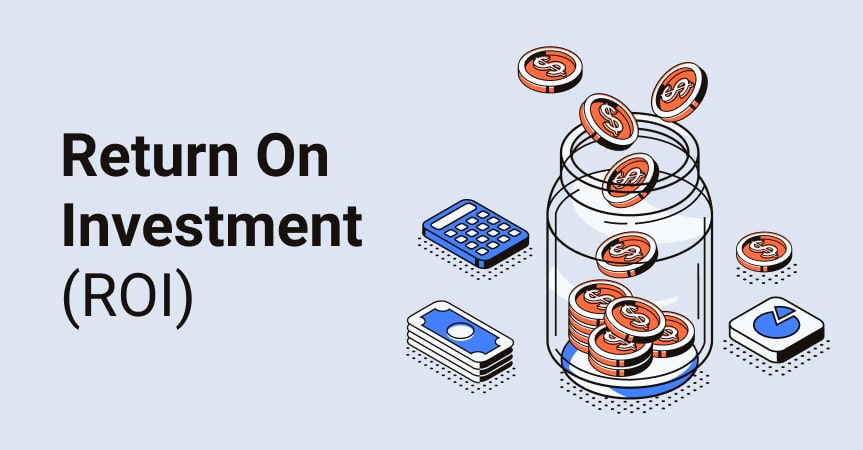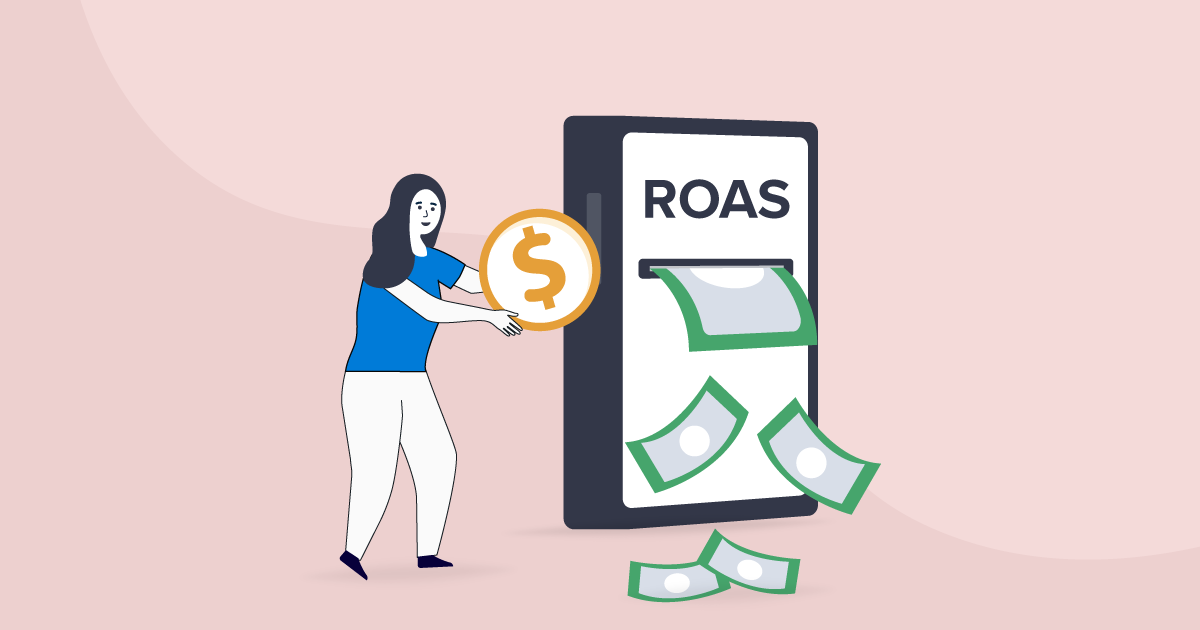
Return on investment (ROI) is the single most important metric for determining the financial success of your PPC campaigns. While metrics like click-through rate, cost per click, and conversion rate matter, they only tell part of the story.
ROI is the ultimate scorecard that indicates whether your campaigns are generating profits after covering all costs.
This simple yet powerful calculation has the potential to completely transform how you manage and optimize your paid search efforts by targeting audience of the right keyword.
But understanding and implementing ROI goes beyond crunching the numbers – it requires changing your mindset to focus on the bottom-line impact of your PPC spending.
In this step-by-step guide, I’ll walk you through 3 Effective PPC ROI Formulas that Guarantee Profit.
I’ve used these formulas successfully with clients to maximize profits from their Google Ads, Bing Ads, and social media advertising to run successful digital marketing strategies down the line.
These formulas may sound complex at first, but once you see them in action through real-life examples and simple explanations, you’ll be able to start applying them immediately to your own accounts.
We’ll cover:
• How to calculate return on ad spend (ROAS), the most fundamental ROI metric that shows profitability for each dollar spent
• The break-even ROAS that factors in your profit margins to determine the minimum ROI needed to cover costs
• The break-even cost per acquisition that identifies how much you can safely spend per conversion while still earning a profit
By the end of this guide, you’ll have a clear and practical framework for integrating ROI-driven thinking into your daily PPC workflow.
You’ll be able to optimize bids, set spending limits and adjust strategies with confidence – knowing you’re making data-backed decisions that maximize the return on your marketing investment.
So let’s get started on the journey toward guaranteeing profits from your PPC spending. The first step is mastering the basic ROI formulas – we’ll cover the rest as we go!

What is ROI?
Return on investment (ROI) is calculated by taking your profit and dividing it by your cost, then multiplying by 100% to get a percentage.
The formula looks like this: ROI = (Profit / Cost) x 100%
Let’s break this down:
Profit: This is how much money your PPC campaigns actually make for the business after covering all expenses related to serving customers. It factors in costs like customer acquisition, fulfillment, support, etc.
Cost: This is the total amount spent on your PPC campaigns, including ad spend, management fees, and technology investments.
So ROI indicates whether the money spent on your advertising is generating a positive return for the business in relation to costs incurred.
Why ROI matters more than click-through rate, cost per click, and other PPC metrics:
• ROI looks at the big-picture financial impact of your campaigns beyond vanity metrics like clicks and impressions.
• It shows you whether your campaigns are truly profitable after considering all costs of doing business, not just advertising costs.
• ROI gives you a concrete goalpost to aim for in your bidding, campaign setup, and optimization efforts. You can adjust strategies to hit target ROI levels.
• ROI helps justify and grow your marketing budgets. Business stakeholders care about return – showing ROI proves the value of your PPC spending.
• ROI reveals inefficiencies and areas of low or negative returns so you can make adjustments to improve profitability.
In short, ROI is the one PPC metric that answers the most important question for any business:
Are we making money from this expenditure?
All other metrics and KPIs are valuable, but they ultimately matter in the context of how much profit they generate.
So that’s why gaining mastery of ROI formulas is the first step toward guaranteeing profits from your PPC campaigns. The rest of this guide will walk you through implementing ROI in practical ways to dominate the search engine with your ads at the top.
Below are the 3 Effective PPC ROI Formulas that Guarantee Profit :

Formula #1: Return on Ad Spend (ROAS)
ROAS is a key metric for measuring the effectiveness of your PPC campaigns. It simply shows how much revenue you generate for every dollar spent on ads.
Formula:
Total Revenue from Ad Clicks / Total Cost of Ads
ROAS gives you a simple way to evaluate whether your PPC spend is paying off in terms of increased sales. However, it does not factor in other business costs like product expenses or labor costs.
Example:
Let’s say you run an e-commerce store that sells necklaces. In the past month, you spent $5,000 on Google Ads and generated $15,000 in total revenue from ad clicks.
Your ROAS would be: $15,000 / $5,000 = 3
Meaning for every $1 spent, you made $3 in revenue.
Tips to increase ROAS:
• Optimize landing pages for conversions. Make sure landing pages feature your best offers and calls to action.
• Test and optimize bids. Testing lower bids for specific ad groups can sometimes raise profit margins while maintaining overall volume.
• Increase conversion rates. Improving site performance, streamlining checkout, and testing limited-time promotions can all boost conversion rates and ROAS.
The example uses specific numbers from an e-commerce store to illustrate calculating ROAS in a tangible way.
The tips provide concrete actions readers can take to improve their own ROAS, focusing on optimizing landing pages, bids, and conversion rates.
Formula #2: Break-even ROAS
Break-even ROAS calculates the minimum ROAS you need to achieve in order to cover your costs and break even. It factors in your profit margins and business expenses.
Formula: 1 / Profit Margin
Example: Let’s say you sell hats for $30 with a 50% profit margin. That means your cost of goods is $15 and your profit is $15 per hat.
To calculate break-even ROAS:1 / 0.5 = 2
This means to break even after costs, you need a ROAS of at least 2. For every $1 you spend, you need to generate $2 in revenue. Anything less and you’ll lose money after costs.
How to test lowering profit margins: While aiming for the highest profit margins is ideal, sometimes testing lower margins can be worthwhile.
If you lowered your profit margin to 40% by pricing hats at $25 instead of $30: 1 / 0.4 = 2.5
Your break-even ROAS would increase to 2.5. For every $1 spent, you now need $2.50 in revenue.
However, by lowering prices, you may attract more customers and increase overall sales volume. Even with the lower profit margin per hat, total profits could rise – as long as revenue growth outpaces the lower margin per sale.
In summary, testing lower profit margins can be a valid strategy if it significantly grows your customer base and overall revenues. This may lower your break-even ROAS but potentially raise profits through higher volume.
Formula #3: Break-even Cost per Acquisition (CPA)
Break-even CPA shows how much you can spend per conversion or lead while still covering your costs. It factors in your conversion rates and profit margins.
Calculating break-even CPA helps optimize your bids – you should aim to pay just below your break-even CPA on average for each conversion.
Formula: Average Profit per Sale / Conversion Rate
Example for single-step sales funnel: Suppose your average profit per sale is $100 and your conversion rate is 5%.
Break-even CPA = $100 / 0.05 = $2,000
This means you can pay up to $2,000 per lead and still break even. Anything higher and you’ll lose money after costs.
Handling multi-step sales cycles: Longer sales funnels require a two-step formula:
- Calculate the true conversion rate by multiplying step conversion rates
- Use that true conversion rate in the break-even CPA formula
For example, if your webinar registration rate is 20% and the registration to order conversion rate is 10%, your true conversion rate is 2% (0.2 x 0.1).
Real-life example: Let’s say your average profit is $50, and true conversion rate is 2% based on a two-step funnel.
Break-even CPA = $50 / 0.02 = $2,500
In this case, you can pay up to $2,500 per webinar registration and still break even after costs.
How to Implement These Formulas
Armed with the ROI formulas, you can now take action to optimize your PPC campaigns for profitability.
Here are some recommendations:
Adjust bids based on break-even CPA: Determine the break-even CPA for your campaigns based on your profit margins and conversion rates.
Then, set a maximum bid that is slightly below your break-even CPA. This will ensure you’re paying a profitable amount for each conversion while still capturing a good portion of the available ad inventory.
As conversion rates change over time, recalculate your break-even CPA and adjust bids accordingly.
Set ROAS targets for each campaign:
For different products, customer segments, or sales funnel stages, you’ll likely want to set different ROAS targets.
For example, you may aim for a higher ROAS in the early awareness stage vs the late consideration stage of the funnel.
Determine the appropriate ROAS targets based on your business goals, then optimize bids and creative to achieve those targets for each campaign.
Determine an attribution model that works:
Attribution models attribute credit for conversion across multiple ad touches, like search ads, display ads, and email.
Choose an attribution model like Last Click or Time Decay that best fits your specific business and sales funnel.
Test different models to find what performs best for your key metrics like ROAS and CPA.
The attribution model you choose will impact how you calculate and optimize the ROI formulas, so getting it right upfront is important.
By applying these recommendations – adjusting bids based on break-even CPA, setting appropriate ROAS targets, and choosing the right attribution model – you can implement the ROI formulas in a practical, data-driven way to improve the profitability of your PPC Ad campaigns.
Bonus: Free ROI Calculator
In addition to the ROI formulas and methods discussed above, free online pay-per-click ROI calculating websites can help you to calculate ppc roi for any investment.
Here are 3 of the best free ROI calculating websites I would recommend:
1) Calculator.net ROI Calculator
This is a simple but effective ROI calculator. Just input the invested amount, returned amount and investment length, and it will instantly show you the ROI percentage, gain/loss amount, and annualized ROI.
2) Omni
This in-depth ROI calculator provides more details and options. A Marketer
can choose to enter either dates or length of the investment. It calculates both simple ROI and annualized ROI.
3)TextMagic
TextMagic’s ROI calculating tool also lets you choose between dates or investment lengths. In addition to basic ROI metrics, it generates a pie chart to visualize the ROI and profitability percentages at a glance.

Next Steps
Calculate ROAS and break-even ROAS for your top-performing campaigns. Identify any that fall below break-even and take corrective action to improve profitability.
Set CPA targets for your key conversion actions based on your profit margins. Use these targets to optimize bids and budgets for maximum ROI.
For complex sales cycles, calculate your true conversion rates and break-even CPAs for each stage of the funnel. Monitor performance against these benchmarks regularly.
Additional Resources:
Google Ads Advisor: Use Google’s free tool to identify recommendations for improving profitability within your current account structure.
SEMrush: Their PPC toolkit includes many ROI calculators, reports, and data to help you optimize campaigns for maximum profit.
SEO.com Blog: Apart from their SEO tips, You may also Check out their extensive library of articles on maximizing PPC ROI including measuring CAC, LTV, and total ad spend efficiency.
Appsumo PPC Academy: Enroll in their training program featuring advanced strategies for managing campaigns based on financial goals and KPIs.
